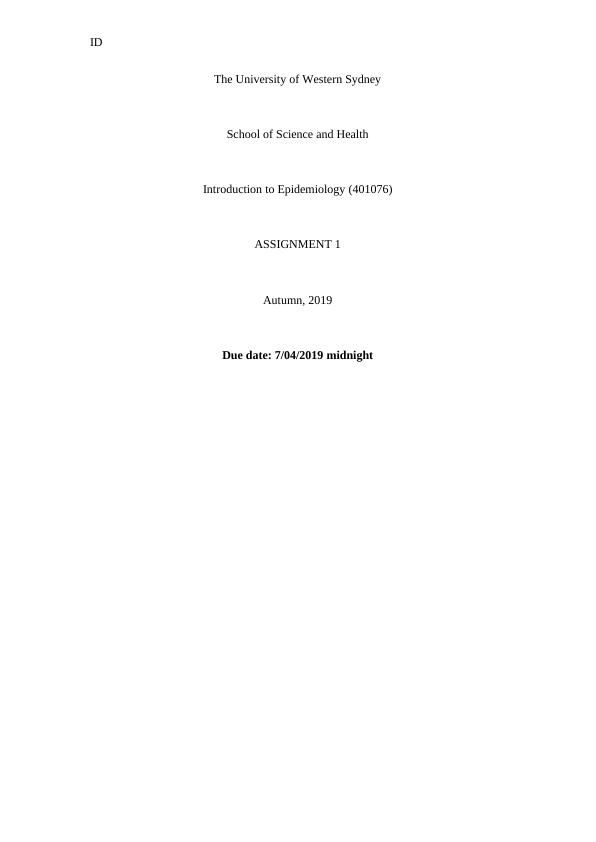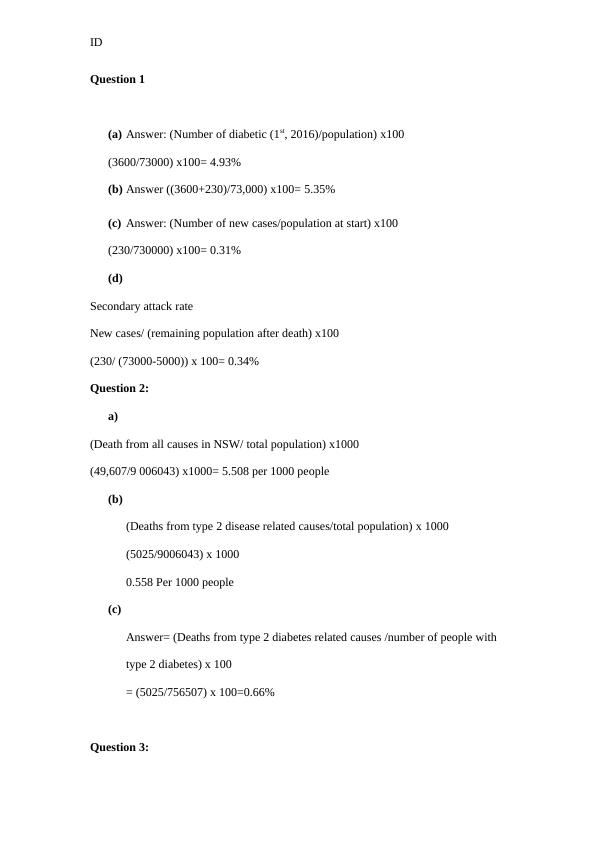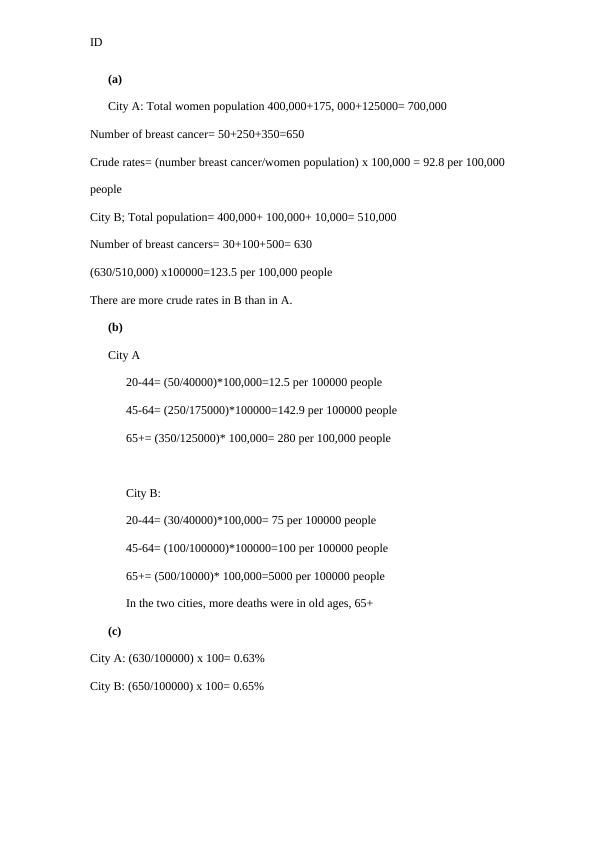Introduction to Epidemiology (401076) Assignment 1
Assignment 1 for the Introduction to Epidemiology course at The University of Western Sydney, involving answering questions based on the learning objectives and concepts covered in weeks 1 to 3.
6 Pages630 Words213 Views
Added on 2023-04-11
About This Document
This document is a solved assignment for Introduction to Epidemiology (401076) Assignment 1. It includes questions and answers related to diabetes, death rates, breast cancer, and falls in the elderly. The assignment covers topics such as calculating percentages, crude rates, and incidence rates.
Introduction to Epidemiology (401076) Assignment 1
Assignment 1 for the Introduction to Epidemiology course at The University of Western Sydney, involving answering questions based on the learning objectives and concepts covered in weeks 1 to 3.
Added on 2023-04-11
ShareRelated Documents
End of preview
Want to access all the pages? Upload your documents or become a member.
Epidemiology Study
|8
|1172
|35
Understanding Disease Occurrence: Measures, Rates, and Risk Factors in Epidemiology
|8
|1688
|214
General Population And Assessed For HIV Virus
|9
|1572
|11
Epidemiology Practices and Principles
|8
|1707
|61
Epidemiology: Principles and Practices
|9
|1880
|109
Research Report on Epidemiology
|5
|625
|35



